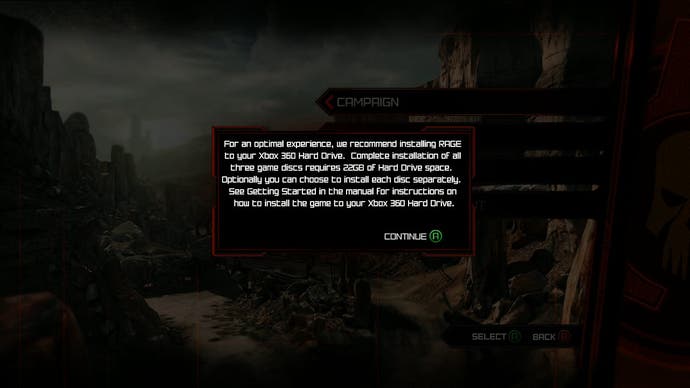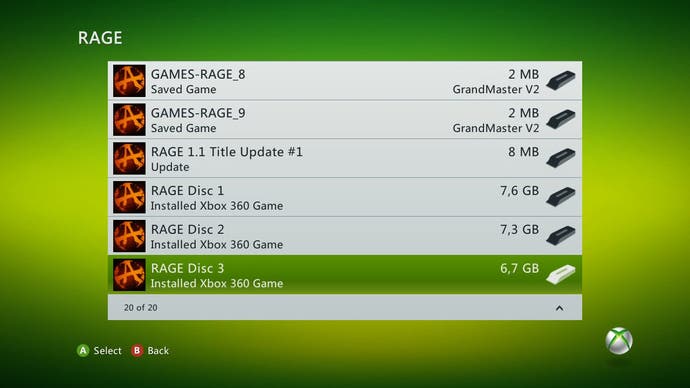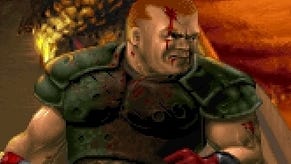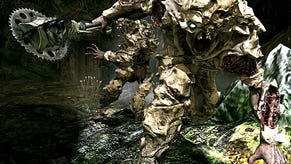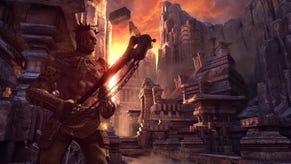Face-Off: Rage
Rage against the machines.
We've seen something similar to this load balancing technology in the past: WipEout HD's 1080p mode scales between 960x1080 and 1920x1080 according to load, while the 3D versions of the MotorStorm titles also adjust resolution depending on the complexity of the scene being rendered. The idea is that motion on-screen is so fast and the user so involved in the experience that a reduced resolution will not be noticed as much as dropped frames or intrusive screen-tear.
The issue with Rage is that res can drop even when there's not a great deal of action on-screen, resulting in an exaggeration of aliasing in more brightly lit areas. In all of the like-for-like shots we were able to find with dynamic resolution in effect on both systems, the detail deficit was more pronounced on the PlayStation 3, sometimes alarmingly so. It's all the more puzzling because often we see resolution drops kick in when it's difficult to imagine the engine being under much load at all. Consider the two shots below:
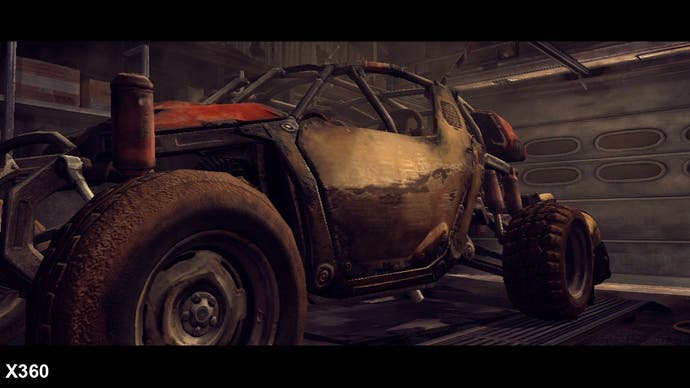
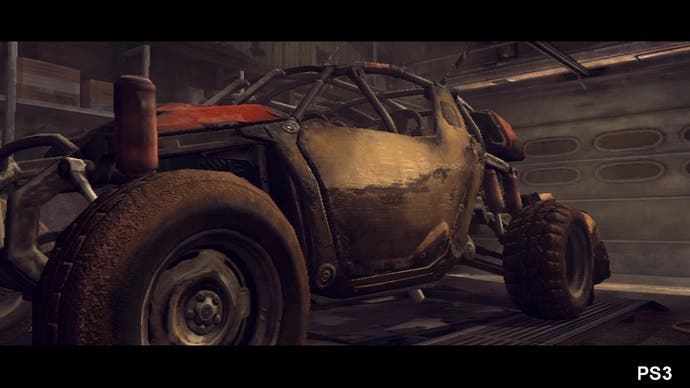
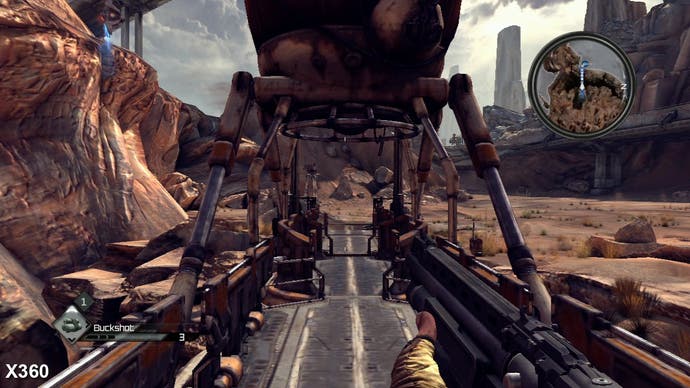
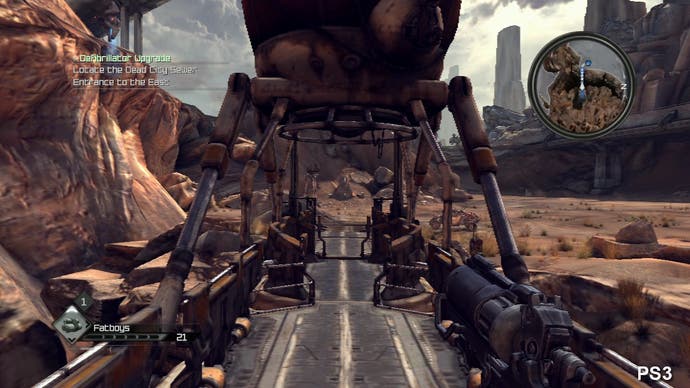
The top shot is just a cut-scene showing your new buggy inside the Hagar settlement garage. It seems to be running at 640x720 on PS3 while Xbox 360 is in the region of 896x720. In the bottom shot, we're again seeing 640x720 on the PlayStation 3, while 360 renders the same scene at 1152x720. In all cases we're seeing a locked 60 frames per second, but we're really scratching our heads on what could be causing the kind of engine stress that requires a downscaled framebuffer in these shots - and they're just two examples from a range we could draw from our captures. In other situations, Rage is capable of producing absolutely phenomenal, richly detailed vistas that stretch out into the distance as far as the eye can see - all at native 720p, on both platforms.
The success of dynamic resolution is all about visual perception and everyone will have their own tolerance level, but based on our experience, Rage on Xbox 360 manages to maintain the illusion of a full high definition presentation even when it is switching between various resolutions: there's just the odd shimmering visible in the aliasing every now and again but overall integrity of the effect is sound. The effect on PlayStation 3 seems to be much more frequent and the resolution drops are significantly more noticeable.
Another element of image quality where there are plain differences between the two consoles is in terms of the texture streaming. To fully understand this, we need to have a bit of a refresher course on how id's virtual texturing works: in short, there are four levels here in the journey from storage to display: the optical drive, the hard drive cache, the memory cache and the on-screen texture. In a worst case scenario, the Xbox 360 will go through all four stages on every piece of art in the game. Installing the game to hard drive cuts out the optical disc completely and thus removes the slowest part of the procedure.
PlayStation 3 only gets a partial install - a weighty 7.1GB that takes around 20 minutes to complete - so some of the texture data is still being drawn from the Blu-ray (which in terms of all-important seek times is slower than the Xbox 360's DVD drive), and this does result in significant differences in the time it takes for the image to fully resolve. Running Rage on an Xbox 360 without the install, but with a hard drive attached for caching purposes, isn't quite as fast as the PS3 - but it's not a million miles away from the overall performance profile.
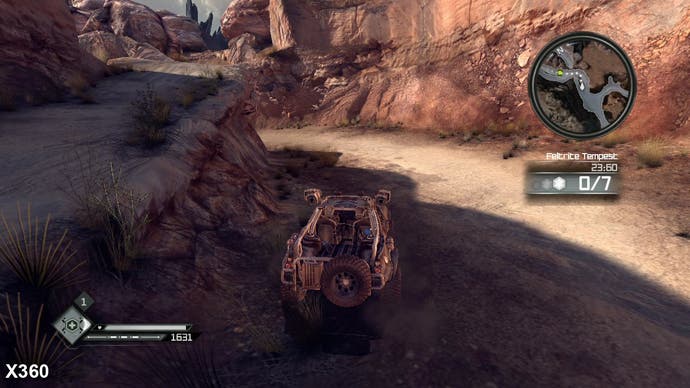
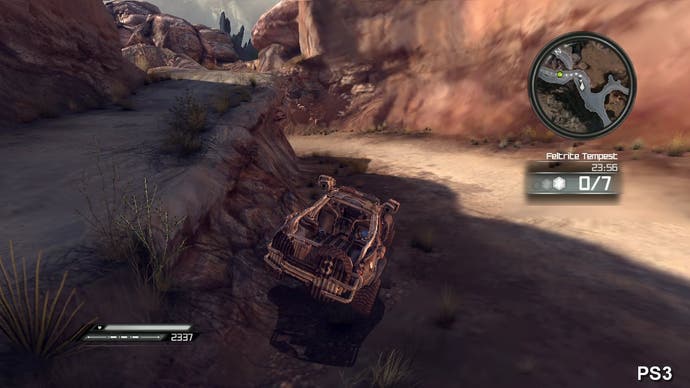
Out of interest, we ran some tests where we would continuously change direction 180 degrees in the exact same spot on the Xbox 360 with and without an install and then compared that with performance in the exact same spot on the PlayStation 3. Curiously, after repeating the process a couple of times, no matter how we ran Rage - even with no hard drive at all - the 360 would resolve prominent textures faster. In his mammoth Quakecon 2011 keynote, John Carmack talks about the fact that they max out onboard memory and that the split system/video RAM of PlayStation 3 in concert with the bulk of the OS caused some issues for them.
In terms of our experiment, the conclusion we have is that the 360 transcodes texture data faster, or it is able to cache more assets in RAM - either way, it's clear that there's more to individual performance characteristics than we know right now but id seems to be more at home with the Microsoft architecture. In terms of how this perhaps could influence gameplay, we're reminded of a couple of Wasteland missions where the player snipes at base guards from afar, ducking into and out of cover. On PS3, we witnessed some screen-filling texture pop-in as we hid behind a dune, which resolved much more quickly on 360.
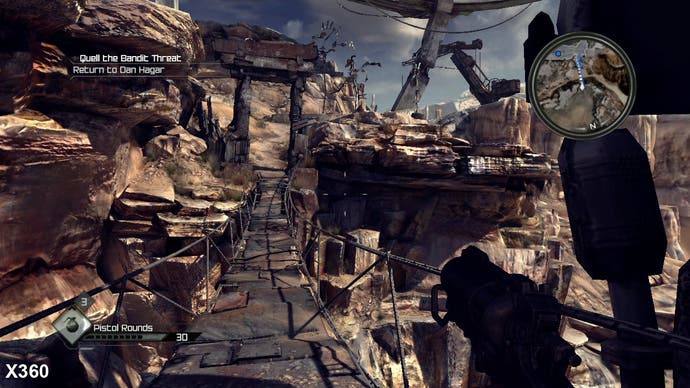
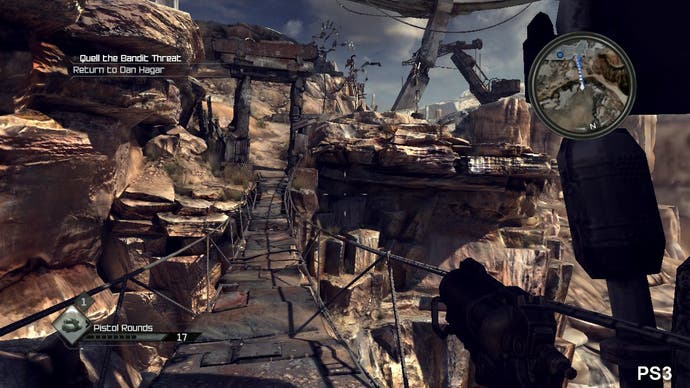


In the Quakecon 2011 keynote, Carmack talks about the Wasteland as being the real challenge for texture streaming. How this translates into image quality on console was fairly straightforward from our point of view - the player tends to be travelling at speed here in his vehicle, and with a great deal of foreground art on PS3 there is simply not time for the full detail assets to be resolved, while things looks fairly solid on the Xbox 360. As the Wasteland area is one of the visual highlights of the game this is a bit of a shame as prominent areas of detail on 360 are very blurry indeed on the PS3.
Another word of warning we should note concerns the way that the Xbox 360 and PlayStation 3 file formats differ. Format a USB drive on your 360, plug it into your PC and make hidden files visible and you can see exactly how Microsoft's system works - it generates a big bunch of large files and stores data within that allocated space. When you download a demo or piece of DLC from Xbox LIVE, it is also stored as a series of large files on the disk - this helps tremendously in terms of keeping fragmentation of the drive low.
The PlayStation 3 doesn't do this: when a game or demo installs to your HDD, there can be thousands of smaller files (in the case of GT5, up to 44,000 files) which does mean that over time your drive can fragment and drive performance will degrade a lot faster. In a recent discussion with a game developer who developed a data-heavy open world game, their extreme stress tests on the PS3 HDD actually reduced performance to lower than that of streaming in the same assets from Blu-ray. In order to show Rage running at its best, we formatted our HDD and gave the game a best case scenario from which to run - a completely empty drive - but it was still found wanting compared to the 360 full install, and wasn't orders of magnitude better than the 360 running from disc with HDD cache.
